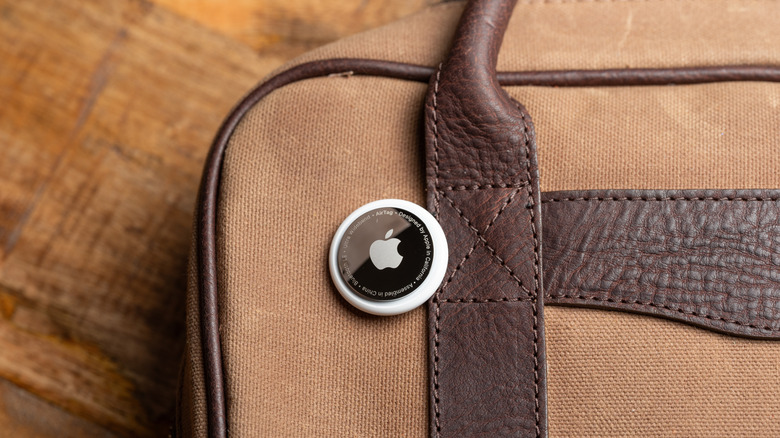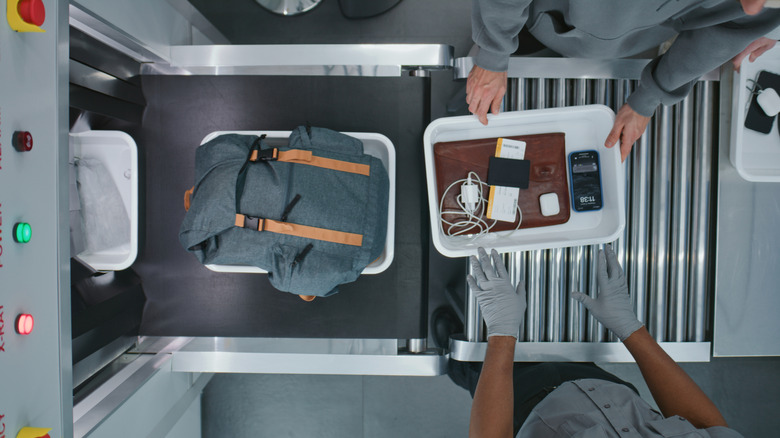Are You Allowed To Keep AirTags In Carry-On Luggage? TSA's Rules, Explained
Since its launch in 2021, Apple's AirTag device has been a blessing for those of us who tend to misplace things. The small coin-sized tracker is a useful accessory that can be used to track everything from keys to cars and from children to pets. Small enough to fit inside a wallet, pocket, or even attach to a keyring or collar, the device works by sending out a Bluetooth signal that can be picked up by a nearby Apple device. The location can then be traced through Apple's 'Find My' network — Find My is Apple's encrypted and anonymous network that can access hundreds of millions of devices to locate an AirTag.
One of the popular uses of AirTags is by travelers. They can use it to provide reassurance that their carry-on luggage is safe and traceable throughout a journey. However, the AirTag uses non-rechargeable CR2032 lithium batteries, and the TSA has pretty strict guidelines when it comes to batteries and flying. So, just how do the AirTag's batteries fit into the TSA regulations?
The good news for cautious or forgetful travelers is that Apple's AirTags are perfectly allowable on board flights as hand luggage. We look at the specific regulations in more detail next, but in short, the amount of lithium present in CR2032 batteries is below the TSA threshold where batteries may be restricted. The specific regulations limit the amount of lithium in non-rechargeable batteries to 2 grams per unit; a CR2032 battery uses only 0.109 grams.
TSA and FAA rules on lithium batteries explained
There are sound reasons why there are regulations covering batteries on planes. Lithium batteries come with various problems, and sometimes even their advantage becomes a problem. For example, they store a lot of energy. For the most part, they do so safely. It's when all that energy is released unexpectedly and spectacularly in a process called thermal runaway that problems can arise. Unfortunately, recent years have seen a huge increase in the incidents involving lithium battery fires on aircraft. According to the FAA, there were 534 verified 'incidents' between 3 March 2006 and 5 Aug 2025. It's this unfortunate tendency to malfunction dramatically that necessitates battery restrictions. However, as noted, the lithium amount present in CR2032 batteries in your AirTag takes them below the TSA threshold.
The FAA and TSA regulations governing electronics on flights are very specific. The FAA regulations allow passengers to pack electrical devices like laptops and cellphones as checked luggage. However, as some airlines have their own rules, it's always worth checking beforehand. The story is different with spare or loose lithium batteries. The TSA and FAA regulations both state that these batteries must be packed in your carry-on luggage. There are no quantity limits with standard batteries, but they must be packed safely. For larger batteries, quantified as between 101 and 160 watts per hour by the TSA, two can be carried onboard with airline approval.
For the diminutive AirTag and its CR2023 198 milliwatt per hour rated battery, the regulations mean it can be packed in both carry-on and checked luggage.

